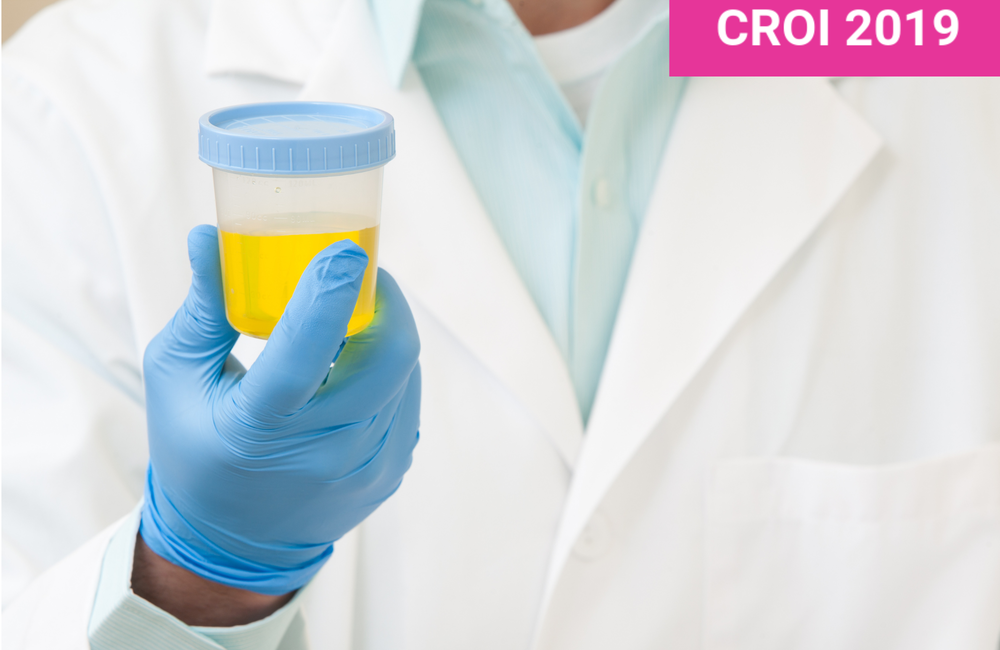
A point-of-care urine test can accurately determine if a person is adherent to tenofovir-based pre-exposure prophylaxis (PrEP), according to research presented to the recent Conference on Retroviruses and Opportunistic Infections (CROI 2019) in Seattle. The test checks for antibodies to tenofovir and was tested in a trial of 30 people in Thailand who had different levels of adherence to tenofovir/emtricitabine PrEP. A minimum cut-off value showing if a person had taken PrEP within the past 24 hours was determined. The accuracy of the urine test compared well to gold-standard assays.
A commercial point-of-care test has now been developed. The strip test provides results within five minutes and costs below $2. The investigators believe it could help motivate people to take their therapy and assist in the identification of people in need of adherence support.
However, some delegates expressed concern that the usefulness of the test in clinical practice could be undermined by the “white coat” effect: non-adherent individuals taking a dose shortly before a follow-up appointment when they knew their adherence would be tested.
With high adherence, PrEP can reduce the risk of infection with HIV by well over 90%. Data from clinical trials suggests that many people inaccurately assess or report their adherence to PrEP. In the VOICE study, for instance, 91% of people said they were adherent, but analysis of tenofovir levels in plasma showed that only 26% of individuals had optimum levels of adherence.
Tests for use in routine care to assess PrEP adherence are therefore needed. The current assays are costly and slow. A team of investigators therefore sought to develop a point-of-care urine test.
They successfully identified a tenofovir-specific antibody in animal tests. This was then validated in a proof-of-concept study. The investigators then designed the TARGET study to determine a level indicating PrEP dosing within the past 24 hours and also to compare the accuracy of urine analysis with current gold-standard assays.
The research was conducted in Thailand and involved 30 individuals. The people were divided into three groups, taking tenofovir/emtricitabine PrEP consistent with varying levels of adherence: high (daily PrEP); medium (four doses a week); low (two doses a week).
The participants provided a total of 637 urine samples over a six-week period after dosing and during washout.
A cut-off of 1500 ng/ml accurately identified 98% of people who took a PrEP dose within the previous 24 hours. The test had high sensitivity (94%) and specificity (99%), its accuracy comparing well to antibody assays (p < 0.0001).
Median levels were 12,000 ng/ml one day after dosing; 5000 ng/ml two days after dosing; 1500 ng/ml three days after dosing; and below the assay's lower limit of quantification four days after dosing.
However, the researchers acknowledged that the test is vulnerable to the “white-coat” effect, with individuals boosting their adherence when they knew a clinic appointment with urine analysis was imminent: a participant in the study admitted to this behaviour. Several delegates also stressed this potential limitation.
During discussion, the investigators noted that the study involved both men and women and the urine test worked well regardless of gender. However, further research is needed to specifically determine how well it performs in transgender women taking feminising hormones.
The current test provides a simple yes/no answer about adherence. A more expensive test capable of determining adherence level (high/medium/low) is in development.
Gandhi M et al. Validation of a urine TFV immunoassay for real-time PrEP and ART adherence testing. Conference on Retroviruses and Opportunistic Infections, Seattle, poster 1298, 2019.
View the abstract on the conference website.
View the poster on the conference website.
Watch the webcast of this presentation on the conference website.
